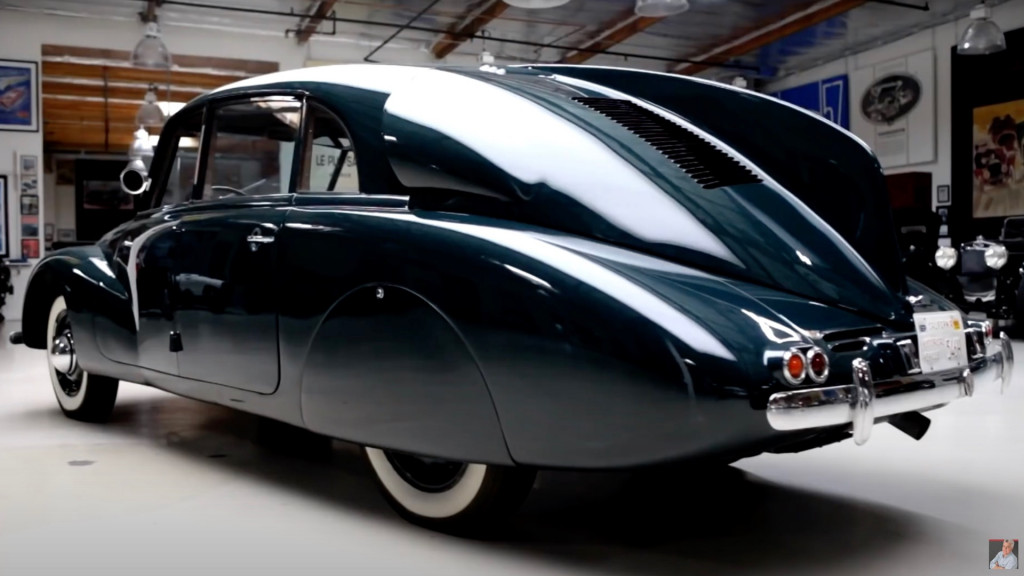The Volkswagen Beetle is likely the most famous rear-engine car to come out of the 1930s, but it wasn't the only one. This episode of "Jay Leno's Garage" features the 1938 Tatra T87, which sports a rear-mounted V-8 and may have been the Czech resistance's secret weapon during World War II.
Beneath the louvers of the T87's streamlined bodywork sits a 2.9-liter air-cooled V-8 coupled to a 4-speed transmission. The engine featured a lightweight magnesium block and hemi heads decades before Chrysler popularized them. A luggage compartment and two firewalls separate the engine from the passenger compartment. The engine from Leno's car was rebuilt with a modern carburetor, giving it 85 horsepower—10 more than stock.
When new, the T87 was advertised as getting 20 mpg at 60 mph, which was fairly good for the period, Leno noted in the video above, while the top speed was around 105 mph. Prototypes had a drag coefficient of 0.24—the same as a modern Toyota Prius—but that rose to 0.36 for production models.
When Ferdinand Porsche unveiled his streamlined, rear-engined, air-cooled, Volkswagen, T87 designer Hans Ledwinka accused him of copying the Tatra's design, taking Porsche to court. Then World War II started.

1938 Tatra T87 on Jay Leno's Garage
During the occupation of Czechoslovakia, Ledwinka was forced to work for the Nazi regime. After the war, he was accused of being a Nazi collaborator by the victorious Soviet Union and sent to prison. Released in 1951, he died in 1967. The lawsuit he started was revisited, and Volkswagen eventually paid Tatra compensation. However, Ledwinka himself never saw a penny of that money, Leno said.
Like the Beetle, as well as the later Chevrolet Corvair, the T87 has swing-axle rear suspension. Decades before it was held up by consumer advocate Ralph Nader as an example of automakers ignoring safety, this primitive independent rear suspension design made the T87 a "Nazi killer," Leno said.
During the Nazi occupation of Czechoslovakia, the luxurious T87 was a favorite of military officers and officials, Leno said. But they were often unaware of the unusual characteristics of the swing-axle suspension, particularly for the rear wheels to "tuck under" during aggressive cornering. This led to many cars getting rolled by their Nazi drivers, Leno said.
After World War II, Tatra returned to producing passenger cars, this time under Communist rule. The 1950s Tatra 603 had a similarly futuristic look to the T87, but later cars had more restrained styling. The company stopped producing passenger cars in 1999, but still makes trucks.